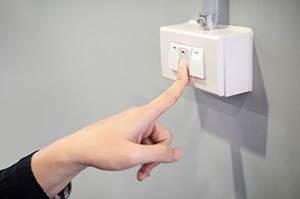Style And Substance
At the Simodec show in France, Wirth & Gruffat (Argonay, France) introduced a new machine called Transturn TT-312. It is designed to combine the advantages of multi-spindle screw machines and rotary transfer technology. The company calls it a manufacturing cell.
At the Simodec show in France, Wirth & Gruffat (Argonay, France) introduced a new machine called Transturn TT-312. It is designed to combine the advantages of multi-spindle screw machines and rotary transfer technology. The company calls it a manufacturing cell.
Built on a rotary transfer platform, the machine has 12 spindles located on an indexable table. Each of the spindles is independently driven by a 10kW motor, and each is capable of up to 6,000 rpm. For thermal stability, each spindle is water cooled. In addition to the rotational speeds for turning, each spindle is capable of full C-axis motion, under the control of the machine's CNC, when drilling or milling operations are specified. A common spindle nose accepts standard collets or three-jaw chuck workholders.
The indexing table uses a triple Hirth coupling system for accurate and repeatable index positioning. Arrangement of the Hirth tooth crown locking and location coupling system does not require the table to lift to index. This design saves time and eliminates possible contamination of the coupling system from chips and coolant.
Indexing of the table is under computer numeric control. It is therefore programmable and can index either one station at a time or multiple stations. This makes for a flexible arrangement whether the shop wants to run the same clamping fixture on each spindle or alternate different workholders. The net result is the ability to machine a single part in sequence or process more than one part at a time.
For applications requiring front and backside machining, the Transturn has sufficient stations to invert or reposition workpieces one or several times in the machining sequence. Each part clamping mechanism has two hydraulic pressures that can be set. High pressure clamps secure thick walled and solid workpieces while a second, lower setting, is available for thin walled parts. For inverting or repositioning workpieces, standard systems or robot manipulators can be used in the machine.
Cutting tools mount on two 2-axis slide sets, one located above the spindle and a second located below. Both slides have 100 mm strokes and operate under a programmable CNC. The slide unit is attached to a vertical support member. This orientation allows chips to fall cleanly away from the tool slide workzone and into a recovery area in the bottom of the machine.
Each slide accepts indexable insert turning tools and static shank tools (drilling, tapping, reaming) using quick-change VDI holders. All stations have through the tool coolant capability. Any of the tool slides can be equipped with power tooling for milling and contouring operations. A minimum of 22 simultaneous machining operations can be programmed on this rotary transfer machine.
Loading of raw stock is by bar feeder with cut-off station. Workpiece blanks can be loaded via an integral robot manipulator or other material handling device.
Transturn uses, as standard, a Siemens 840D CNC. This control is capable of operating up to 60 axes.
For operator access, a six-panel telescoping door allows full access around the periphery of the machine. Wide openings create easy access to each work station. In operation, the enclosure is leak proof against metalworking fluids.
In the United States, Transturn is distributed through TPS International (Sussex, Wisconsin).
Related Content
High-Volume Machine Shop Automates Secondary Ops
An Ohio contract shop added a compact, self-loading CNC lathe to perform unattended secondary ops on a part for a key customer rather than running it on a manually loaded chucker.
Read MoreStarting Small with Automation
Quick-change workholding and flexible robotic automation started this small shop on the path to success.
Read More4 Bright Ideas for Effective Lights-Out Machining
Adopting lights-out machining involves considerations when a machine shop decides to move forward with the process. Here are some tips to a successful implementation.
Read MoreZoller Event Shines Lights on Shopfloor Connectivity
The company’s open house event highlighted smart manufacturing solutions from CAM to part.
Read MoreRead Next
Do You Have Single Points of Failure?
Plans need to be in place before a catastrophic event occurs.
Read MoreSeeing Automated Workpiece Measurement in Real Time
User-friendly inspection software for CNC machining centers was shown at IMTS 2024 monitoring measurements between and after machining while performing SPC based on recorded measurement values.
Read MoreA Tooling Workshop Worth a Visit
Marubeni Citizen-Cincom’s tooling and accessory workshop offers a chance to learn more about ancillary devices that can boost machining efficiency and capability.
Read More








.jpg;maxWidth=300;quality=90)












